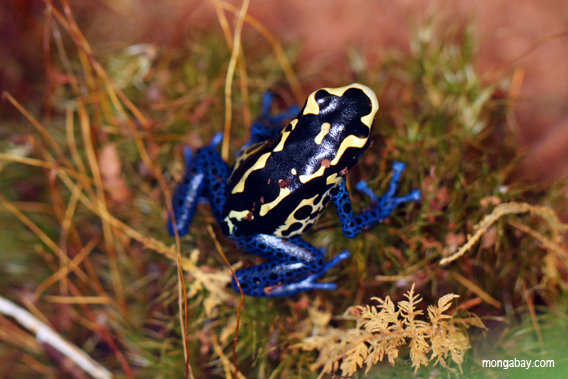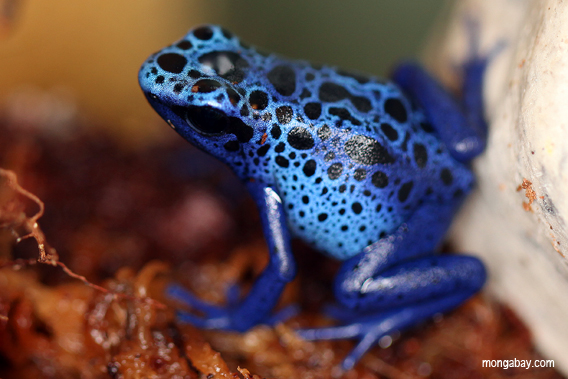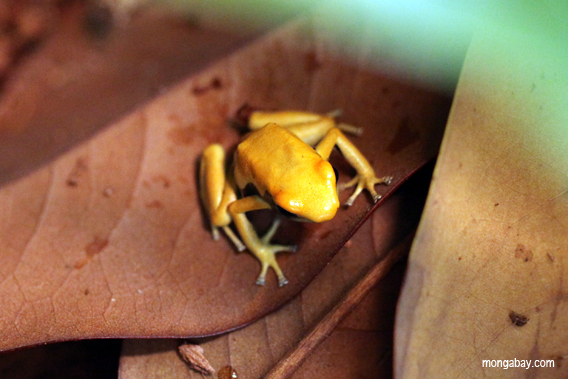
Blue-and-yellow poison dart frog (Dendrobates tinctorius). Photos by Rhett A. Butler
In recognition of Amphibian Ark winning mongabay.com’s 2011 conservation award, our pictures of the day this week will focus on amphibians.
The blue-and-yellow poison dart frog (Dendrobates tinctorius) — often called the dyeing dart frog — is found in the rainforests and savannas of Suriname, Guyana, French Guiana, and northern Brazil. Across its range there are several color forms, two of which are shown below. Some of these morphs may represent separate species.
The common and species name of tinctorius is derived from indigenous use of the frogs. Tribes have been known to rub skin secretions from the frog on the skin of young parrots. The toxicity causes the parrot to grow unusually colored feathers.
Like other dart frogs, Dendrobates tinctorius is toxic, which it advertizes to potential predators with its bright warning coloration. Its toxicity is derived from the small insects and arthropods it eats.
Dendrobates tinctorius isn’t at risk of extinction, although some color forms, including azureus (below), are threatened in the wild by over-collection for the pet trade.

This morph, known locally as “Okopipi” in the Trio language, was formerly considered a separate species but is now classified as Dendrobates tinctorius azureus.

Golden morph.







